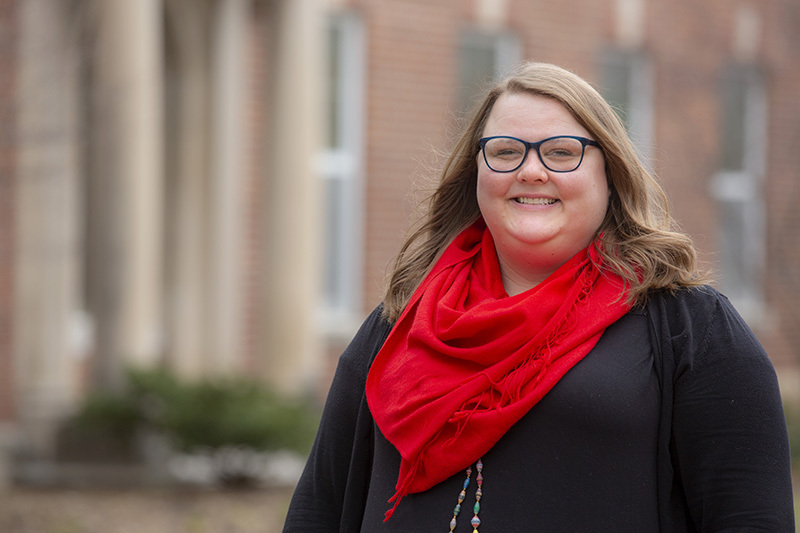
Megan Johnson, sensory services coordinator, has many responsibilities including sign language interpreter for students at Iowa State. Photo by Christopher Gannon.
Megan Johnson came to Iowa State as a sign language interpreter, having previously worked in Utah and Washington, D.C. Now she works to ensure deaf or hard of hearing and blind or low-vision students are able to learn and communicate.
The basics
Name: Megan Johnson
Position: Sensory services coordinator, student accessibility services, dean of students office
Years at ISU: 4
Education: Bachelor's degree in special education, University of Utah; associate's degree in sign language interpreting, Salt Lake Community College
Tell me about your job.
I coordinate services for all of our deaf or hard of hearing students as well as blind and low-vision students. We have about 35 deaf or hard of hearing students that run the gamut of hearing loss. They include people who use sign language, use an amplification system in the classroom or get notes from classes. There are a lot of things in between, and I administer all of them. I schedule interpreters and captionists.
I provide interpreting services and consult for three or four blind or low-vision students this year. I might meet with a professor and discuss textbooks because they are not always accessible to our blind or low-vision students. We are going more to e-books now and that can be a challenge with screen readers. Screen readers look a lot of different ways from speech to text or zoom readers and others that are all unique to the individual. I also spread awareness for things such as Braille signage.
How did you become a sign language interpreter?
My high school had language tracks and I chose Spanish, but I was not good because my accent was terrible. My teacher told me I probably didn't want to come back next year because it wasn't working out. I didn't know what to do because what language do you not need an accent for? My high school also offered American Sign Language, and I was pretty good at it. I really just lucked into it. The deaf community doesn't consider itself a disabled community. It considers itself a linguistic minority with a culture and a vibrant community, and I got into that and really loved it.
As the only sign language interpreter on campus, how do you meet the needs of all students?
I am the only full-time interpreter on campus, but we hire a whole cadre of contract interpreters. Sometimes we have upward of six or eight interpreters on campus at one time. Signing is physically demanding, but also, it is mentally demanding. Research says after 15 or 20 minutes, the number of errors in interpretation skyrockets. For a content-heavy class or event longer than a half hour, we usually will send two interpreters. The person who is the support team [not signing at the time] is monitoring for accuracy, so they are still working.
What is a typical day for you?
No day is normal. I am not an 8-to-5 employee. This semester, there is a student taking a night class, so one night a week I am here until 8 p.m. I have gone on trips with students, I have spent weekends at trainings. I also go through the contract process with procurement services and evaluate bids. I have a unique position in that 10 percent of my time is HR-related because I coordinate and interpret for faculty and staff who are deaf or hard of hearing as well.
What do you like best about your job?
As an interpreter, you are kind of the invisible human. I am a conduit for language, which is very important, but I also get to do outreach and education, and counsel with students. It is a great feeling when a student graduates and is successful. And making sure the university is becoming more accessible all the time is important to me.

